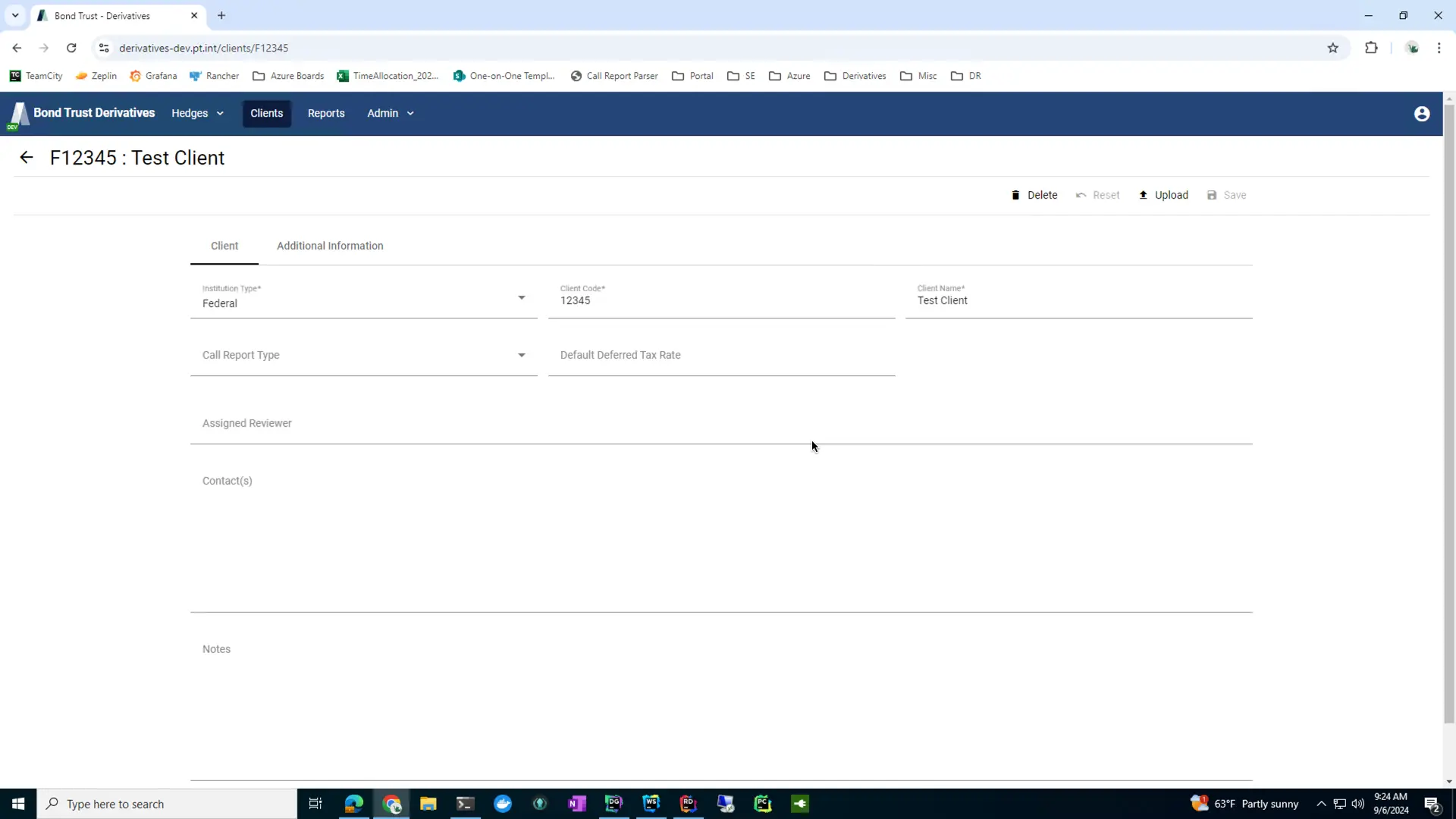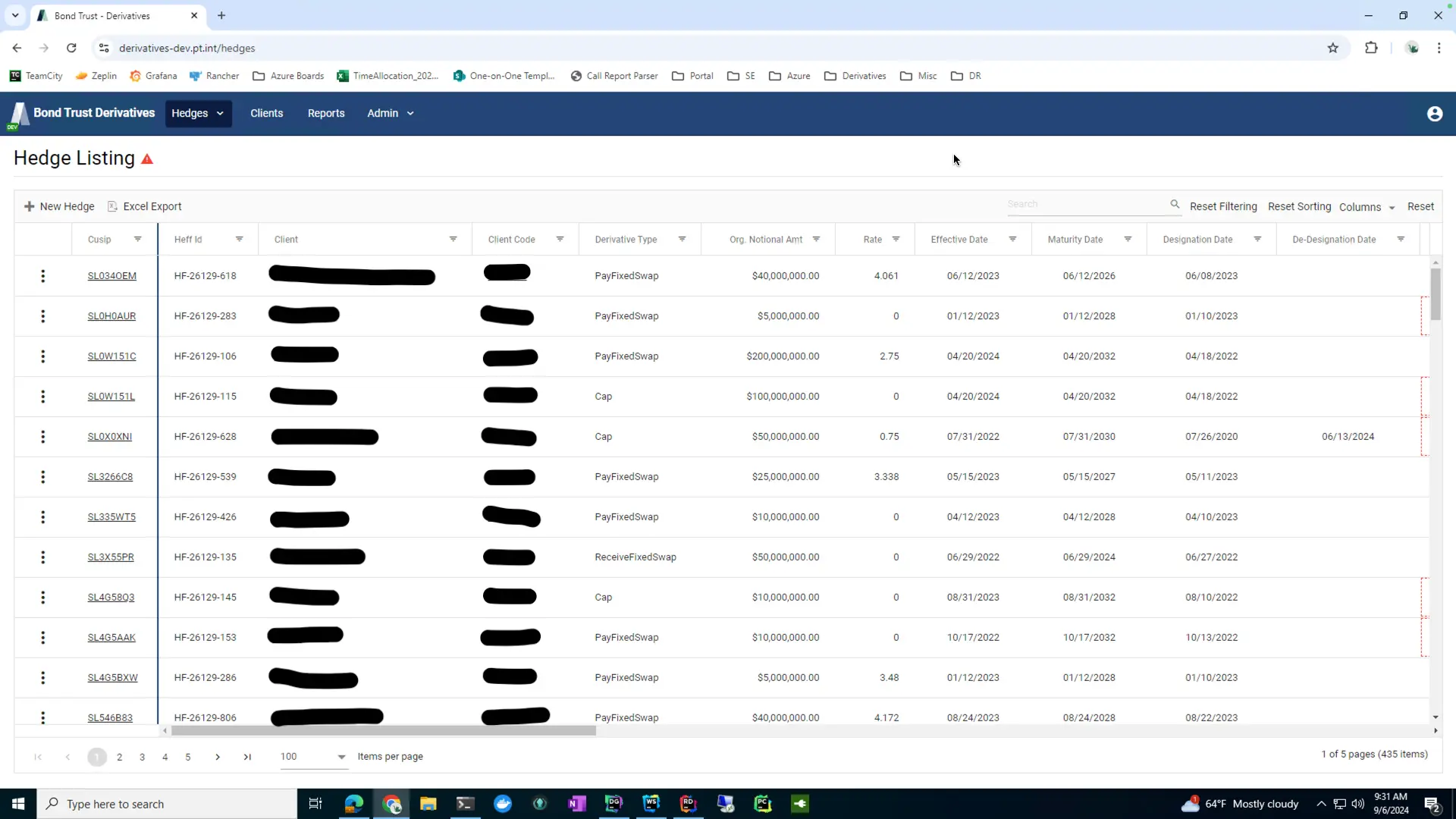Derivatives ui
One reason I excel at most software projects is that I can handle so many parts of the development process. I can design a database, write the backend, and create a user interface. I can also manage a team, write documentation, and present to stakeholders. I’ve done all of these things in my career, and I’ve done them well.
Purpose
Our firm has launched a new wing of our business that focuses on derivatives. It’s taken off, and we’re seeking to enhance this line of business with a dashing new user interface. The team that typically works with this business group doesn’t have a lot of experience with Angular, so I was brought in to make it happen and help others become more proficient with the new UI.
Design
This was my first opportunity to use the SyncFusion library. We’re mostly using it for the tabular Grid, and I admit that it does look pretty snazzy. Converting the APIs to use OData so that I could better integrate pagination was a tricky task, but I’m pleased with the results.


Process
When there are specialists on a team, work can sometimes stall while one waits for the other to complete their work. My colleague is transitioning into a managerial role and, as the project progressed, he was able to devote less and less time to writing the backend code. Fortunately, he had me on the team. I was able to pick up the slack and write the backend code for the new features we were adding so, even though he was swamped, we still met our deadlines. That took the pressure off him, and it’s more fun to work up the whole stack from database to UI!